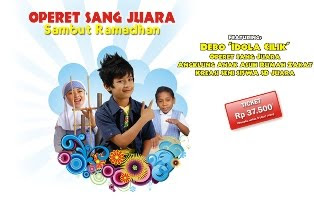My Indonesia
Indonesia, the largest archipelago and the fifth most populous nation in the world, has a total of 17,508 islands, of which about 6,000 are inhabited. Indonesia extends 3,198 miles (5,150km) between the Australian and Asian continental mainland and divides the Pacific and Indian Oceans at the Equator. With a total land area of 767,777 square miles (1,919,443 sq. km), its 190 million inhabitants are made up of 300 ethnic groups who speak an estimated 583 different languages and dialects. There are five main islands in Indonesia. These are: Java, Sumatra, Kalimantan, Sulawesi and Irian Jaya.
Across its many islands, Indonesia consists of distinct ethnic, linguistic, and religious groups. The Javanese are the largest and most politically dominant ethnic group. Indonesia has developed a shared identity defined by a national language, ethnic diversity, religious pluralism within a majority Muslim population, and a history of colonialism and rebellion against it. Indonesia's national motto, "Bhinneka Tunggal Ika" ("Unity in Diversity" literally, "many, yet one"), articulates the diversity that shapes the country. However, sectarian tensions and separatism have led to violent confrontations that have undermined political and economic stability. Despite its large population and densely populated regions, Indonesia has vast areas of wilderness that support the world's second highest level of biodiversity. The country is richly endowed with natural resources, yet poverty is a defining feature of contemporary Indonesia.
Across its many islands, Indonesia consists of distinct ethnic, linguistic, and religious groups. The Javanese are the largest and most politically dominant ethnic group. Indonesia has developed a shared identity defined by a national language, ethnic diversity, religious pluralism within a majority Muslim population, and a history of colonialism and rebellion against it. Indonesia's national motto, "Bhinneka Tunggal Ika" ("Unity in Diversity" literally, "many, yet one"), articulates the diversity that shapes the country. However, sectarian tensions and separatism have led to violent confrontations that have undermined political and economic stability. Despite its large population and densely populated regions, Indonesia has vast areas of wilderness that support the world's second highest level of biodiversity. The country is richly endowed with natural resources, yet poverty is a defining feature of contemporary Indonesia.
Thursday, July 23, 2009
Sweet Coconut Rice Balls
(Klepon)
(Klepon)

Ingredients :
* 1½ cups glutinous powder
* ¾ cup lukewarm water
* 2-3 drops green food coloring
* 8 tsp. grated Java dark brown sugar
* 1 cup fresh-grated coconut, mixed with ½ tsp. salt
Directions :
Mix the rice powder with the lukewarm water and green food coloring into a firm but flexible dough.
Pull off one full teaspoon of the dough and shape it into a ball with approximately 1-inch in diameter.
Push a finger into the center of the ball to make a hole, and put in approximately ½ tsp. of the grated sugar. Seal, and roll it back into the ball shape with the palms of your hands. Prepare all the balls and set them aside.
Prepare a pot half filled with water and bring it to a boil.
Drop the balls into the boiling water. Remove the balls with a spoon once they float to the water surface and then roll the balls in the grated coconut.
Makes 30 rice balls.
sources : www.asiarecipe.com, www.flikr.com
Labels: Traditional Dessert
0 Comments:
Subscribe to:
Post Comments (Atom)



,+Jakarta.jpg)




Post a Comment